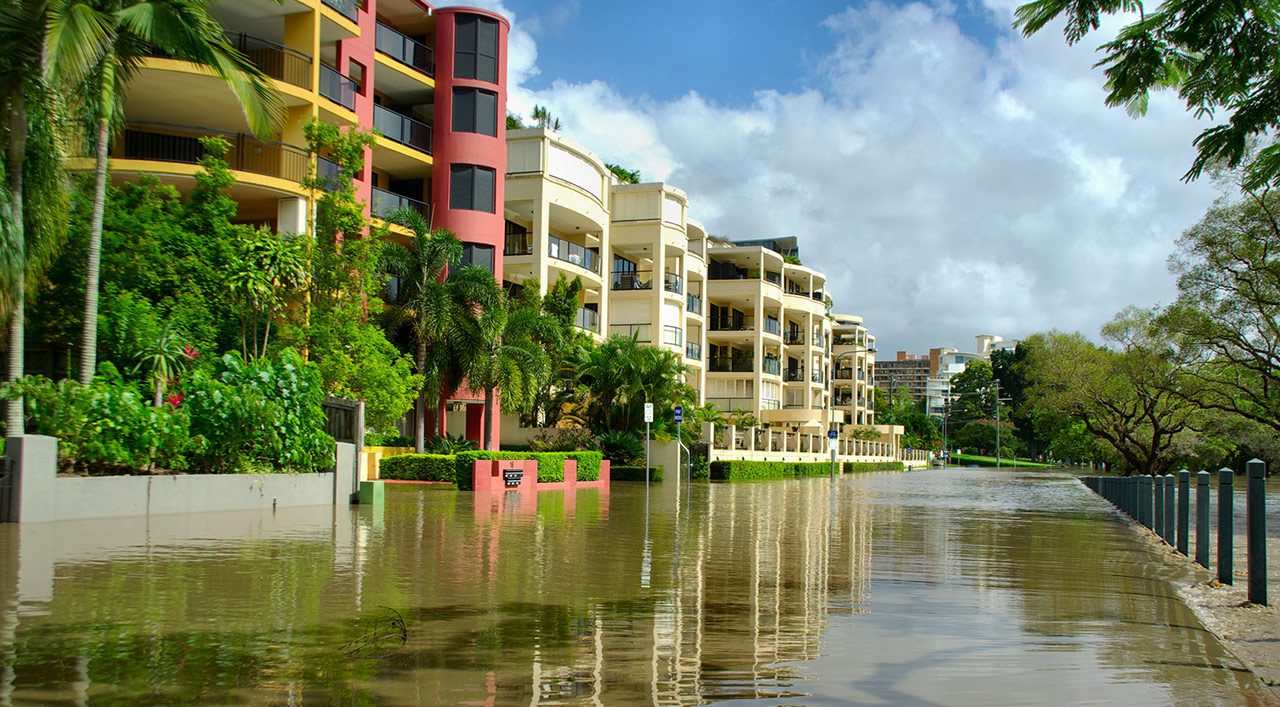This article is from the Australian Property Journal archive
FOLLOWING a number of damaging flood events to hit Queensland in the past decade, local government areas have received grants to build flood resilience through special projects.
In response to the 2021-22 disaster season which affected parts of Queensland immensely, 36 councils will receive funding for 127 projects that will take place through the Commonwealth-State Disaster Recovery Funding Arrangements (DRFA).
The councils will share in a total of $18.25 million in funding projects that will explore flood studies, risk assessments and other special projects.
It is one package of the $31 million Flood Risk Management Program which aims to . This program falls under the Commonwealth and Queensland Governments’ $721 million extraordinary disaster assistance package which was announced following the 21-22 season.
The state copped a battering across late 2021 and early 2022. Central, Southern and Western Queensland rainfall and flooding (November – December 2021), ex-tropical cyclone Seth (Dec 21 – Jan 22), South East Queensland rainfall and flooding (Feb – Apr 22) and Southern Queensland flooding (May 22) affected large parts of Queensland to a damaging extent.
The damage that was afflicted on a large number of properties also led to a hike in insurance costs for flood-affected areas.
Analysis from the Climate Council said last year that risks of extreme weather and climate change will leave one in 25 homes in Australia uninsurable by 2030.
The flood risk management program will hopefully restore affected areas in Queensland while also brainstorming and investigating ways where the risk can be mitigated in the future. Floods have caused more harm for Queensland than any other natural hazard and with warnings that climate change could worsen in the future, immediate action needs to be taken.
The program is a sign of the government pledging to make movement after drama throughout 2022 where local governments and the NSW government came under scrutiny following consecutive major flood events across the state. A local man in Eugowra had was recorded giving Premier Dominic Perrottet a lashing for inaction during the flood crisis and aftermath.
The purpose of the Queensland Flood Risk Management Framework is to
- Set the direction for flood risk management in Queensland
- Provide clarity around expectations
- Outline the roles and responsibilities of all stakeholders involved
- Guide and support decision-making by councils
Federal minister for emergency management Murray Watt says the funding is vitally important in reducing future risk of flood disasters.
“Disaster support doesn’t just end when the floods recede, and this funding shows the Albanese and Palaszczuk Governments are committed to long-term assistance which better protects communities into the future,” Watt said.
“This funding enables councils to understand and mitigate flood risk through flood studies, risk assessments and management strategies.”
“Optimising an area’s flood resilience requires knowing what will work best based on the available data and modelling, and we are pleased to deliver the tools councils need to make this happen.”
Deputy premier and minister for the Queensland reconstruction authority Steven Miles says the risk management program can be a trail-blazer for disaster management.
“Even though we’re in the midst of this current disaster season, Queensland communities are still recovering from the impacts felt during 2021-22,” Miles said.
“These flood studies, risk assessments and special projects will ensure local councils are better prepared heading forward.
“We want Queensland to continue to lead the country in building resilience through programs like this,” he concluded.




